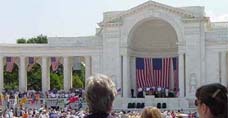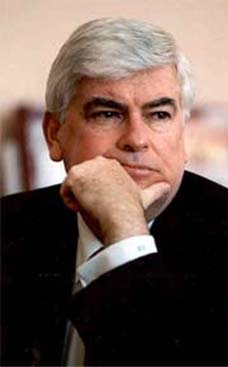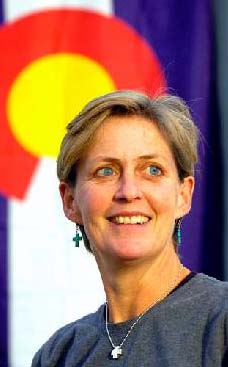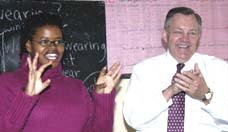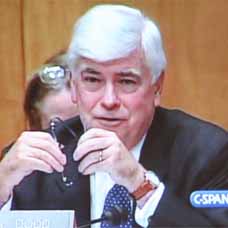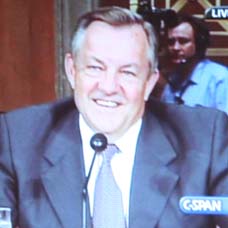
At the Returned Peace Corps Volunteer Conference in San Diego in 1997 was an exhibition room filled with international non-governmental organizations (NGO's) with headquarters in the United States: CARE, American Red Cross, International Refugee Committee, World Vision, and others. Here I was hoping to find a sympathetic ear. “I would like to build playgrounds all over the world,” I said to anyone who would listen. “Can you hire me?” “Your work seems very interesting,” most replied. “But we do not have funding for playgrounds. We do, however, reconstruct roads, homes, and water and sanitation pipelines. Would you be interested in this?” I was surprised to see at every booth projects that concentrated on the rehabilitation of buildings and civil infrastructure and none that dealt with the outdoor environment. Did the wars and civil conflict not damage the parks, forests, and children ’s playgrounds as well? Hadn’t anyone considered the psychosocial impact that war has on children? Didn’t these same wars and civil conflicts deny a nation’s children the chance to be children again? Discouraged, I walked over to the last booth. As luck would have it, my portfolio filled with photos of playgrounds and parks that I had helped design and build in Costa Rica with the Peace Corps, and in Morocco, Malta, Venezuela, and the United States struck a chord with the American Refugee Committee (ARC). “ARC has just been funded $1.6 million by the United States Agency for International Development (USAID) to build playgrounds and sports fields throughout Bosnia,” said the representative, “and we are looking for someone with experience to be the program manager right now!” Two weeks later I was on a plane flying to Bosnia.
Costa Rica RPCV Karla Christensen writes: Can Landscape Architects make a difference in war-torn countries?
At the Returned Peace Corps Volunteer Conference in San Diego in 1997 was an exhibition room filled with international non-governmental organizations (N G Os) with headquarters in the United States: CARE, American Red Cross, International Refugee Committee, World Vision, and others. Here I was hoping to find a sympathetic ear. “I would like to build playgrounds all over the world,” I said to anyone who would listen. “Can you hire me?”
“Your work seems very interesting,” most replied. “But we do not have funding for playgrounds. We do, however, reconstruct roads, homes, and water and sanitation pipelines. Would you be interested in this?” I was surprised to see at every booth projects that concentrated on the rehabilitation of buildings and civil infrastructure and none that dealt with the outdoor environment. Did the wars and civil conflict not damage the parks, forests, and children ’s playgrounds as well? Hadn’t anyone considered the psychosocial impact that war has on children? Didn’t these same wars and civil conflicts deny a nation’s children the chance to be children again?
Discouraged, I walked over to the last booth. As luck would have it, my portfolio filled with photos of playgrounds and parks that I had helped design and build in Costa Rica with the Peace Corps, and in Morocco, Malta, Venezuela, and the United States struck a chord with the American Refugee Committee (A R C). “ARC has just been funded $1.6 million by the United States Agency for International Development (U S A I D) to build playgrounds and sports fields throughout Bosnia,” said the representative, “and we are looking for someone with experience to be the program manager right now!” Two weeks later I was on a plane flying to Bosnia.
Nothing could have prepared me for the destruction of this beautiful country, even after watching television coverage and reading books and news articles about the problems in the former Yugoslavian republics. Whole villages were wiped out, skyscrapers turned to rubble, and people left with no homes, food, or jobs to support their families. Schools had been used to house the military or hold prisoners during the five years of war, and fields and forests where children once played were covered with land mines. Obviously, there were no functioning swings or seesaws for the children to play on. While other NGOs were providing food and medicines, building homes to encourage minorities to return to their villages, repaving roads, and repairing water and electricity lines, ARC w a s tasked with rebuilding recreational areas. USAID’s intent was to add a human face to its brick-and-mortar work. The concept behind the program was that the new outdoor play spaces would become focal points, not only where children of all ethnicities would be brought together but also where families and friends could begin once again to mend differences and rebuild relationships that were destroyed during the war. It was the first project of its kind, anywhere, to be defined and implemented within the framework of development assistance. It was not a project to provide a quick fix, but one that had a long-term vision for the future of the country.
I had imagined that when I arrived in Sarajevo, the capital of the new country of Bosnia Herzegovina, I would settle in easily and manage the program from the main office with H Q support. I thought there would be plenty of time to get acquainted with the organization, the staff , and the situation within the country. Little did I know that the country director had something else in mind. Within three days (and with about 100 new acronyms to memorize), I was given a Jeep Cherokee with a map and told to set up a new office in Tuzla, two hours away and over three mountain ranges, from which I was to be the head of office and program manager of the p l a y g rounds and sports fields program. This was the beginning of a list of titles I was to acquire.
T h e re were ten of us in the program team consisting of engineers, architects, and community liaison officers (C L O), along with eight support staff. Three were based in my office and the re s t w e re in the main office and the four sub-offices spaced around the Republic of Bosnia. When we expanded the program into the Serbian Republic, the group grew to 24. Most had at least one year of experience working with an international organization but about five years of professional inactivity during and after the war. Of the ten program staff, I was the only non-Bosnian but, to my great relief, everyone spoke English. Most of the local staff tripled their duties and became translators and drivers when needed.
I lived in the office. Each day my staff would greet me at the one c o m p u t e r, still with my slippers on and wrapped in thick sweaters. ( I t usually took about an hour after the coal man had done his job for the radiators to heat up.)
Roads would be c l e a red of snow by about 10:00 A M, and we would set out to visit the sites (180 in all) already designated by local municipalities for the program. Most sites were suitable, having been located in schools and public parks, and were designated safe—meaning free of land mines.
We organized workshops where the Bosnian children worked together on the design of their own playgrounds. The idea was to create play spaces with the children that were unique to them and their environments and that re p resented objects familiar to them. Understandably, the many years of warfare had had an impact on the children, leaving them to seek dreams and visions far from the reality of their everyday lives: They mostly drew boats, even though some villages were two hours’ drive from the coast and none of the children had been to the sea since the war began.
Out of about 150 drawings we put together construction documentation for wooden boat playhouses. Being a certified playground safety inspector I taught the architects the safety standards that are applied in the United States. To the best of our ability, we met the safety standards, although liability was rarely an issue. The boats sit on a nine-inch bed of sand and incorporate a bow and a stern, a captain’s wheel, a ladder, two slides, a ramp, parallel bars, a tire wall for climbing, and a vertical fireman's pole for sliding down. They are bilevel, have roofs and, like houses, include tables and chairs, thus creating a diverse environment conducive to contemplative and pretend play. A large percentage of the playgrounds included access ramps for the physically impaired . All were made with only local materials and by community contractors.
ARC’s concept was to have the playgrounds accompanied by a sports field so that every age group had the opportunity to play and express themselves through physical exercise. In addition, the older group on the sports field would be able to supervise activity on the nearby playground. The sports fields were equipped with basketball hoops, soccer and handball goals, and volleyball nets. All were constructed loc a l l y, giving birth to a new industry. (At one time we were contracting with more than 32 companies.) In some high schools, completely new multipurpose c o u rts with a long-lasting asphalt surf a c e w e re made.
In six months we built 180 playgrounds and sports fields. The project was so successful that U S A I D financed another $1.5 million to build another 100 in the next nine months. By enlisting the children to take part in the design of the playgrounds , we created safe play environments that w e re filled with many challenges and experiences. All children, Muslim, Cro ationn , and Serbian, of all ages, and including those in wheelchairs, could not only develop their physical skills but also develop their social and cognitive/imaginative skills together.
The beneficiary schools and municipalities all organized big parties to celebrate the completion of their new playground or s p o rts field. If we were lucky, the U.S. ambassador would lead the ceremony. Often, h o w e v e r, celebrations were postponed due to ongoing ethnic tension. In one case, I had accompanied a C L O to a village where we were helping to organize a soccer game between a Bosnian Serb and a Bosnian Muslim team. The day b e f o re our meeting with the town mayor, someone had uncovered a mass grave where many residents’ family members were buried. Under the circumstances, the mayor had to cancel the game for fear that it would endanger the delicate peace.
When the program in Bosnia was completed, I was hired by Save the Children Alliance to set up their new offices in Kosovo, and then later by Catholic Relief Services (C R S) in Albania to manage a $1.6-million program jointly funded by U S A I D and private C R S moneys, with Mercy Corps International as the u m b rella grant manager. In 19 months we re constructed 21 schools in Albania, with full community participation.
Albania is one of the poorest countries in Europe. After 45 years of communist rule and neglect, as well as economic and political instability following 1991, most of the country was in ruins. Roads that were more like rocky riverbeds, hospitals without the minimum supplies to function, and schools with leaky roofs, bro k e n toilets, and trash-filled yards were the norm. U S A I D saw the need to send funding to Albania and had N G Os implement a program that re c o n s t ructed schools and hospitals while building the capacity of the members of the beneficiary communities.
The C R S program in Albania was called the Parent School Partnership Program (P S P). Reconstruction of the schools was a small element in this five-year program, yet absorbed most of the funds as well as the focus of the staff. The concept that I was to develop was to use the building process (design to constru ction) as a means to bring parents, teachers, and children together.
School activities that we initiated, such as design workshops and facade and mural competitions, were aimed at developing organizational and leadership skills so that one day they would become the advocates for improving the country ’s educational system, independently of international donor support . It was an ambitious goal but one worth pursuing.
My focus as a landscape architect changed drastically when I s t a rted working with C R S. This time the majority of my effort s w e re concentrated on buildings, although almost every school we reconstrructed also had improvements made in the school yard . My title was program manager for rreconstruction/education. This meant surveyor, designer, construction supervisor, contract administrator, finance manager, staff supervisor, donor liaison, fund-raiser, community liaison off i c e r, trainer, and summer camp program organizer. (Everyone who works in international aid is expected to perform many duties.) Luckily, in Albania C R S also provided a great deal of training that helped me to improve in areas where I had little experience.
A team made up of heads of offices, project managers, architects, engineers, and C L Os was divided among five suboffices throughout Albania and supported by professional staff at the main office in the capital, Tirana. Even with such a large team, our task was a difficult one. The country, after years of uncontrollable growth and “free for all,” was full of corruption. Many contractors felt they had a right to win the tenders, and when not selected they often threatened the national staff. In one instance, one of the engineers was abducted and dumped miles away fro m his home.
Land ownership was another problem. After the communist regime fell, some residents felt that they had natural ownership to school property. They would build walls in the school yard and claim it for themselves. In one of the schools where a C R S- paid contractor built a solid brick wall along the school’s borders, parts of it were mysteriously knocked down in the middle of the night. It took weeks to settle the issue in court .
To d a y, due to our persistence, the school yards that were once collection points for open sewage, parking lots for cars, or outdoor toilets for the nearby markets are now filled with children playing. Each of the schools, depending on the needs assessment by the school community, is almost completely reconstructucted from the interior to the exterior. They were equipped with sports fields and playgrounds, outdoor c l a s s rooms (amphitheaters), and children ’s gardens, and now boast colorful facades designed by the students.
The playground and school reconstruction programs are excellent examples of landscape arc h i t e c t u re becoming an essential element in the re c o n s t ruction of wart o rn and unstable countries. These p rograms should not be the last. Landscape architects can play an important role in ensuring the health and well-being of peoples affected by war, natural disasters, or civil conflict. Through the design and re c o ns t ruction of the outdoor spaces where communities meet to conduct business, celebrate, educate, and re c reate, landscape a rchitects can help to make a better world for those who have suffere d .
In the January issue of Landscape Arc h i - t e c t u re, the Land Matters editorial asked, “Are there any landscape architects out there who are working or planning to work in Afghanistan?” To my knowledge there are no landscape architects working as full-time pro f e s s i o n a l s to rebuild Afghanistan, and none in other parts of the developing world except me. In the seven years that I have been working abroad on humanitarian and development projects, I have met one landscape arc h i t e c t u re student, one intern , and one landscape architect with a small amount of funding to implement a shorrt - term project but, as far as I know, no one but me is working as a full-time professional. Why are n ’t there more ?
International development is perhaps an anomaly to many landscape architects. Hopefully, the paragraphs below will help clear the way to a better understanding of this interesting field.
T h e re are two sides to international aid; one side is relief aid (humanitarian) and the other is development aid. Relief aid is of shorter duration (although many crises last decades), with people working in emergency situations until refugees return home, food is locally produced, or the life-threatening conditions have been removed. Development aid is a longer- term affair in which workers move in to initiate programs that contribute to the people ’s quality of life and assist them on their road back to normalcy. (Bear in mind that the line between relief and development is a bit blurred at times. In Bosnia, relief workers were distributing food to distant villages alongside groups rebuilding hospitals.)
An aid agency such as USAID is a governmental organization looking for non-goverrnmental organizations or contractors with qualified people to implement its programs. Often consultants are hired for their immediate technical expertise, while others are hired on a long-term basis for their managerial skills. N G Os filling technical track positions for a reconstruction/ rehabilitation project often advertise for engineers and possibly architects — but not landscape architects. This is not because landscape architects are not qualified to fill the positions, but simply because the human resources people do not know that landscape architects do more than design and plant gardens.
How can landscape architects assist interrnational aid?
Emergency response/disaster relief — refugee camp design and coordination, flood and sanitation control, community-built initiatives
Community development—capacity- building programs, community mobilization projects, i.e., playgrounds , community centers, and parks where children and adults can also be engaged in the design and construction process.
Sustainable environmental programs — agriculture, reforestation, agro-forestry, eco-villages
Urban planning—the design and rebuilding of entire villages and cities destroyed by war or natural disaster
Reconstruction/rehabilitation — parks, playgrounds, historical sites, tourist areas
n Education—landscape architecture classes at universities in developing countries .
I believe that people who have practiced landscape architecture in the United States and abroad are qualified to work in the above fields. The skills necessary for such jobs are skills that landscape architects use daily. As we look at a site, we see not only the structure on the site but its surroundings as well. We are trained to use an integrated approach in which the community, the landscape, and the infrastructure are all considered in any design. We use techniques that are re q u i red for such works (although some a re termed in a different way by development professionals), such as site inventory and site analysis, program inventory and program analysis, design, community participation, construction documentation, contracting, construction supervision, and monitoring and evaluation.
The humanitarian and development aid fields are extremely competitive, and the fact that landscape architecture is generally unknown to the average recruiter does not make it easier to get a job. This challenge should not discourage anyone interested. Minimum requirements are two years of work experience in a developing country, ability to speak at least one foreign language, a graduate degree in the related field, and the ability to live and adapt to foreign and often difficult environments. Experience in staff supervision , program development, and budget management are also necessary skills sought by the international aid agencies. The hardest part is to get the two years of international experience. The Peace Corps is an excellent way to gain this, and many N G Os offer voluntary positions and fellowships to people who are interested. As with any job search, networking among professionals in the care e r field is critical, and being in the right place at the right time might supersede all the minimum requirements.
L A Karla Christensen, Assoc. A S L A, may be reached at Pelican_karla@yahoo.com. NOVEMBER 2 0 0 2 | 1 0 9 | Landscape Architecture Shared Wisdom
